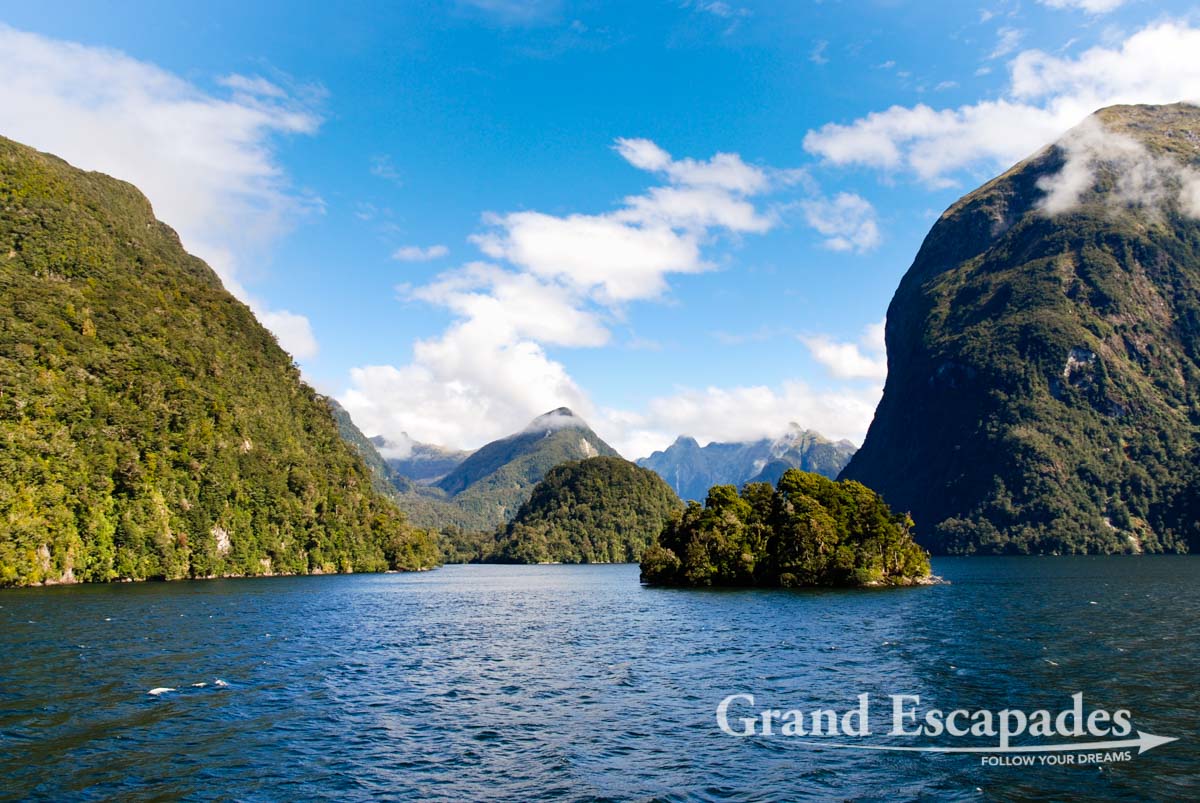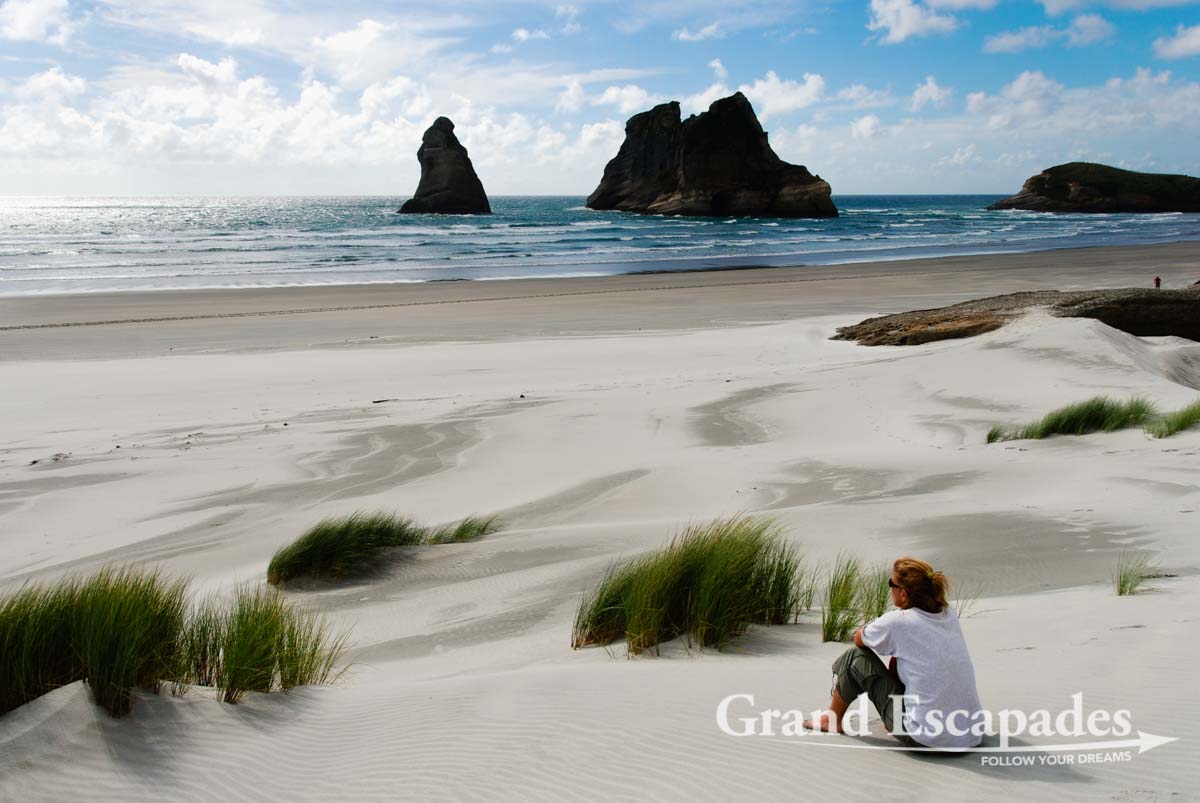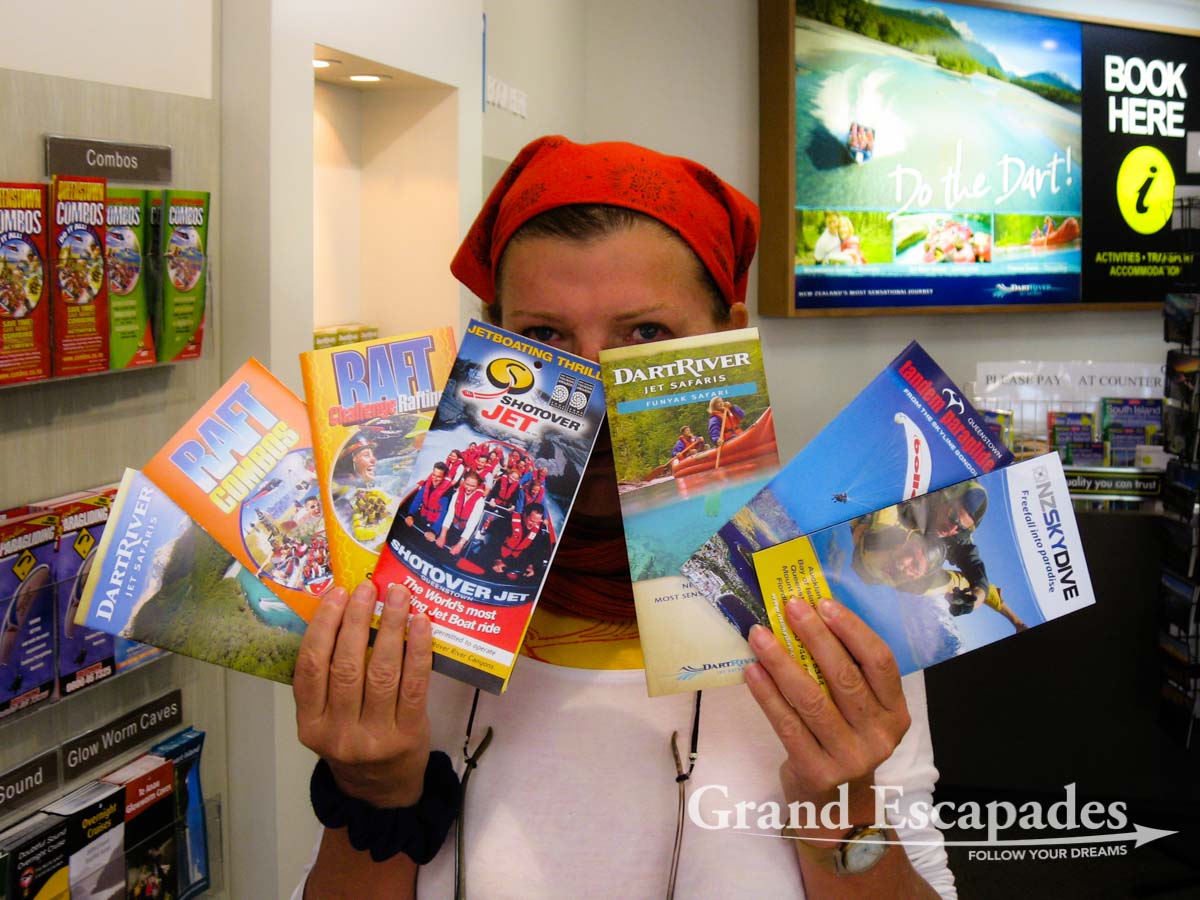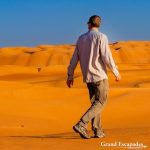If the name Doubtful Sound seems weird: Captain Cook wisely refused to sail into the sound, since there seemed to be no easterly winds to take the boat back out again. He thus named it Doubtful Harbour. The Doubtful Sound, at the very heart of Fjordland, is absolutely massive and to do an overnight cruise was the wisest decision ever!
We find it difficult to describe this experience because this trip was simply overwhelming. Every second of it was exciting, fascinating and informative, thanks to the nature guide on board, who provided a great deal of information on the region’s fauna and flora as well as its history.
The journey starts by crossing Lake Manapouri in a small vessel. Now this is not some dull, ole little pond but New Zealand’s fifth largest lake, studded with islands and a maze of side arms & coves. On top of that, the shore is lined with mountains and smaller green hills that provide the scenic background for this first part of the trip.
The boat meanders through all this amazing landscape until you reach the end of West Arm. There, you have some time to wander around the little museum and then hop on the bus that takes you across Wilmot Pass to Deep Cove. At this “gate” to Doubtful Sound, our boat was waiting at the wharf. By that time we had experienced a magnificent cross section of wilderness: a lake, an alpine pass and a fjord.
The next 24 hours were an unforgettable treat for all our senses. We enjoyed gourmet food, excellent and professional service and passed through outlandish scenery of temperate rain forest and valley after valley grinded down by glaciers only 2 million years ago.
In the afternoon, we took a little excursion in a smaller boat and went close to shore to get a close look at the vegetation that our guide explained in great details. Large podocarp trees compete with the beech, fern and moss inhabit the lower level of the forest. What is fascinating is that all this grows on solid rock! The trees that grow on these rocks, scraped smooth by glaciers, depend on the build-up of leaves and moss mould for nutrients. It is a truly alien sight. In the late afternoon, we reached the Tasman Sea and ventured a tiny bit into the ocean, which was extremely calm that day.
A cove in a sidearm provided the shelter for our overnight stay and finally it downed even the most resistant passenger that we were at a very, very remote place. This feeling was enhanced when we entered another arm of the fjord the next morning. What followed there seemed like a little exercise for stressed city dwellers: the engine as well as the boat’s generators stopped and we were invited to stop talking, moving around and taking photos. It was a remarkable experience to stay quiet for almost 10 minutes: all you heard was the sound of the birds and the little streams of water coming down the mountain. These few minutes were simply magic!
The only attraction we missed on this trip was due to the incredible good weather: the temporary waterfalls all had gone dry. One would have dropped a 1.000 meter straight down from a cliff, making it the highest waterfall in the world.
On the trip back, going across Lake Manapouri, Heidi had a very interesting conversation with the skipper, learning a lot about the people working on the boats. Furthermore, she learned that the TV serial “Dancing Stars” was also a big thing in New Zealand, but here they danced to tunes of “Sound of Music”.
In our enthusiasm, we probably repeat ourselves, but we can only recommend this trip, not only because of the scenery, wilderness and remoteness one can experience, but also because the whole trip is very professionally organised, with enthusiastic, hard working staff and excellent food.


















